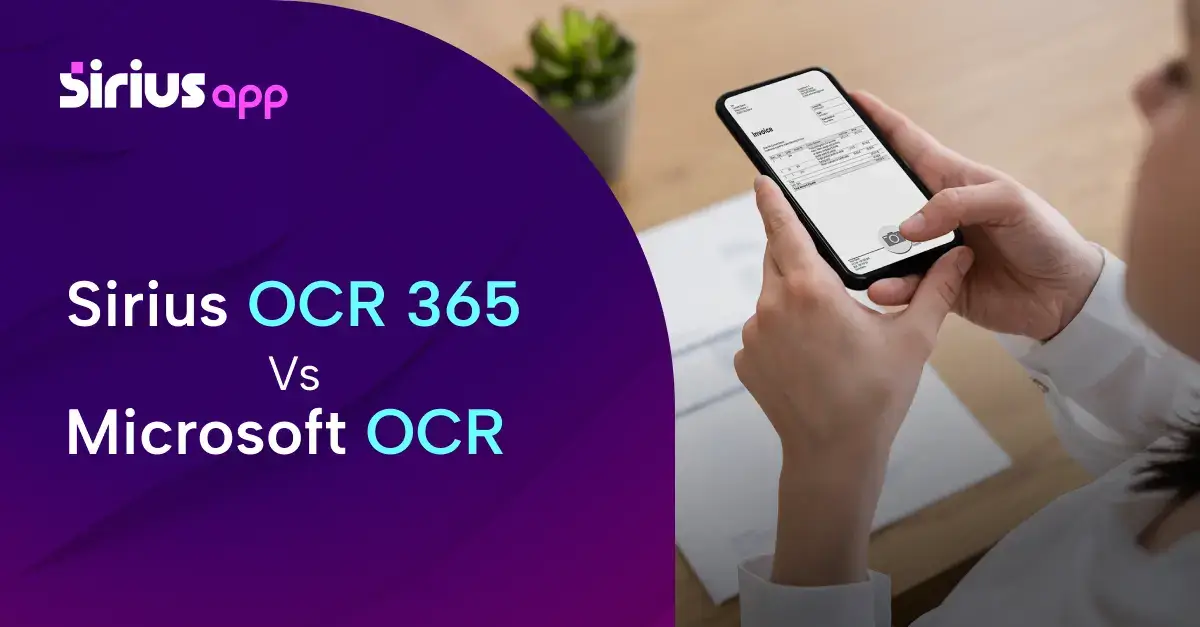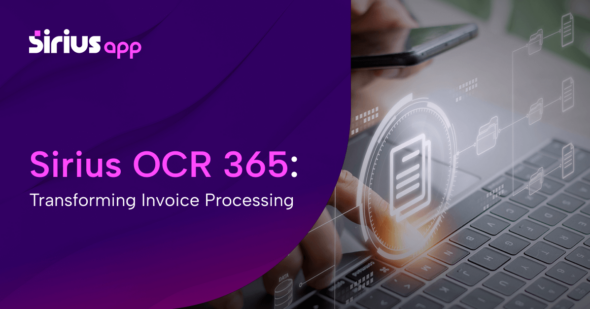While technology has evolved so much around digitising business processes, many companies still rely on manual data entry into their enterprise resource planning (ERP) systems. This labour-intensive process presents a host of challenges, including the significant time and resources required to input data manually. This diverts valuable manpower away from core business activities.
That’s not all—manual data entry process lacks scalability for evolving businesses dealing with growing volumes of data. The only way to tackle that would be to keep hiring more data entry clerks. Then there’s the matter of data duplication and errors, which are risks of manual handling of sensitive information. Your employees can always misplace or lose data. Critical business data can also easily land in the wrong hands during the manual data entry process.
Furthermore, human errors are inevitable in manual workflows. Errors in data lead to inaccuracies that impact business everything from routine operations to strategic decision-making. And while you can greatly benefit from real-time data processing when it comes to collaboration, reporting, and decision-making, manual data processes don’t exactly offer you that.
But here’s the game-changer for you!
Enter Optical Character Recognition (OCR) solutions – a game-changer for businesses dealing with high volumes of documents. OCR technology automates data processing, transforming how businesses handle data entry. By automating the process of data extraction from physical or digital documents, OCR significantly improves efficiency, accuracy, and scalability while also reducing errors, costs and security risks. But the biggest upside to eliminating manual data processes for you is being able to focus more on strategic tasks, driving more growth and innovation.
Owing to OCR’s benefits, technology platform companies have long been developing OCR tools and one of the leading ones is Microsoft’s OCR. It comes with strengths, like high accuracy, AI and ML capabilities, and versatility. But many businesses often have second thoughts about going for it because as it turns out Microsoft OCR also poses some limitations. And that might just be a big turn off for companies looking to fully leverage OCR technology.
But why? Allow us to provide a detailed comparison of Microsoft OCR with our Sirius OCR 365, so you can make an informed choice based on your specific needs.
Microsoft OCR
Microsoft OCR is a powerful tool that can extract printed or handwritten text from images such as posters, street signs, and product labels, as well as from documents like articles, reports, forms, and invoices. The text is typically extracted as words, text lines, and paragraphs or text blocks.
The good thing is Microsoft’s OCR engine is composed of multiple advanced machine-learning based models supporting global languages. It can extract printed and handwritten text including mixed languages and writing styles. It is available as a cloud service and on-premises container for deployment flexibility. With the latest preview, it’s also available as a synchronous API for single, non-document, image-only scenarios with performance enhancements that make it easier to implement OCR-assisted user experiences.
OCR is also part of the Universal Windows Platform (UWP), which means that it can be used in all apps targeting Windows 10. It’s designed to handle various types of images, from scanned documents to photos. In addition to this, Microsoft Purview uses OCR scanning to scan content in images for sensitive information.
Sirius OCR 365
Sirius OCR 365 is an advanced OCR application that automates the data extraction process for streamlined operations. Developed by Sirius App, it’s designed to escape the drudgery of manual invoice processing.
Here are some of its key features:
- Automated Data Extraction: It captures data automatically and accurately from various types of invoices, including item descriptions, quantities, prices, VAT, and vendor information.
- Data Validation: The system cross-validates the extracted data with the source document, making necessary adjustments or corrections in the OCR system to improve data accuracy.
- AI and ML Capabilities: Equipped with an innovative retraining model powered by AI and ML, the system intelligently learns from user inputs, understands fields of different invoices, and improves field mapping accuracy over time.
- Multiple File Format Support: The system ensures flexibility, accommodates diverse file types such as PDF, JPEG, PNG, and caters to various needs and preferences¹.
- Integration with ERP: Extracted data is automatically transferred into your ERP software, ensuring accuracy and real-time information.
The major benefits of Sirius OCR 365 include time and resource savings, unmatched accuracy (achieving a 90% accuracy rate in data extraction from various invoice types), enhanced information retrieval, and seamless integration with ERP systems. It’s designed for businesses looking to optimise their operations by streamlining the data entry process.
Comparing Sirius OCR 365 vs Microsoft OCR
Both Sirius OCR 365 and Microsoft OCR are designed to help businesses gain efficiency, scalability, and accuracy by eliminating the burden of manual data entry. But here are still some underlying differences that separate the two:
Price
Sirius OCR 365 is priced at $633 for 0-45K transactions. Each transaction refers to one image or document or page processed. The add-on capacity is also available at $253 for 30K additional pages. That puts its cost at $0.4 per transaction or lower. On the contrary, Microsoft OCR offers 0-31K transactions at $500 with each additional 31K transaction add-on costing $500. That’s approximately $0.5 per transaction or higher.
Monitor and Control Retraining
While both Sirius OCR 365 and Microsoft OCR boast AI and ML capabilities, the latter imposes some limitations over how you can use learning models to retrain its app. Microsoft has the full control over how its OCR tool performs, how it learns and what it learns. That might not be ideal for your unique business needs. That is why we designed Sirius OCR 365 to provide you with full control over its retraining and what models it uses. That way, you can determine how quickly and when your system accuracy evolves.
Optimised Retraining Schedules
With Sirius OCR 365, you also have the flexibility to schedule retraining over the weekends so you can use it for document processing in workdays. This will improve the performance of the built-in AI and ML features at a steady but constant pace without disruptions, enhancing the app’s learning curve. However, Microsoft OCR doesn’t offer that facility, so retraining must be scheduled during live operations.
Functionality
What’s also noteworthy about Sirius OCR 365 is that it can automate error processing and retraining on its own. You just have to set the parameters right and the apps carries on with it without manual intervention. That saves you time and effort, while also ensuring optimised system performance. But you will need manual support from Microsoft in order to retrain your Microsoft OCR to detect and improve its errors. That can be a tad cumbersome and annoying for the users.
Multi-Document Processing
This one’s easy! Sirius OCR 365 can read many service invoices, sales and purchase invoices without requiring an additional service module. But Microsoft OCR needs additional paid service modules to process sales and purchase invoice.
User Experience
User experience is one of the key determinants of user adaptability for any software, and these two OCR apps are no exception. While Sirius OCR 365 provides a straightforward, simple, and intuitive user experience that doesn’t require users to sign up for training, using Microsoft OCR may need technology expertise or assistance, increasing the cost and timeline for its deployment.
| Features | Sirius OCR | Microsoft OCR |
| Pricing | $633 for 0-45K transactions $253 for each additional 30K transactions $0.4 per transaction or lower | $500 for 0-31K transactions $500 for each additional 31K transactions $0.5 per transaction or higher |
| Intelligent Document Processing | Because it has fixed pricing, the cost will not be changed by redundant information | It does not have fixed pricing hence the cost will be affected by redundant information. |
| Server Cost | Control where to host and scale the server | Hosted by Microsoft |
| Retraining Capabilities (Header and Table) | Available | Available |
| Optimised Retraining | Schedule retraining during weekends and use workdays for document processing | Not available |
| Monitor and Control | Control over retraining models, which increases accuracy in the long run | Dependent on Microsoft |
| Multiple Languages | English only | Support multiple languages |
| Document Type | PDF and image files | PDF and image files |
| Error Processing | Can retrain and automate error processing | Needs manual input |
| Ease of Use | Simplified UI/UX | May need technical expertise |
| Data Security | Authorised control over data | Hosted by Microsoft |
| Multi-Document Processing | Reads many service invoices. Sales and purchase invoices do not require multiple services modules. | It cannot read numerous service invoices. A client must buy numerous services to handle sales and purchase invoices. |
The Conclusion
The choice between Sirius OCR 365 and Microsoft OCR should be guided by the specific needs, priorities, and use cases of your business. Consider factors such as the type of documents you deal with, your integration needs with ERP systems, your budget, and your data security requirements. By carefully evaluating these factors, you can make an informed decision that best suits your business needs. However, you can unburden yourself from making this decision by getting our experts to evaluate your needs and suggest the best-fit OCR solution for your business. You can also book a free demo here.



